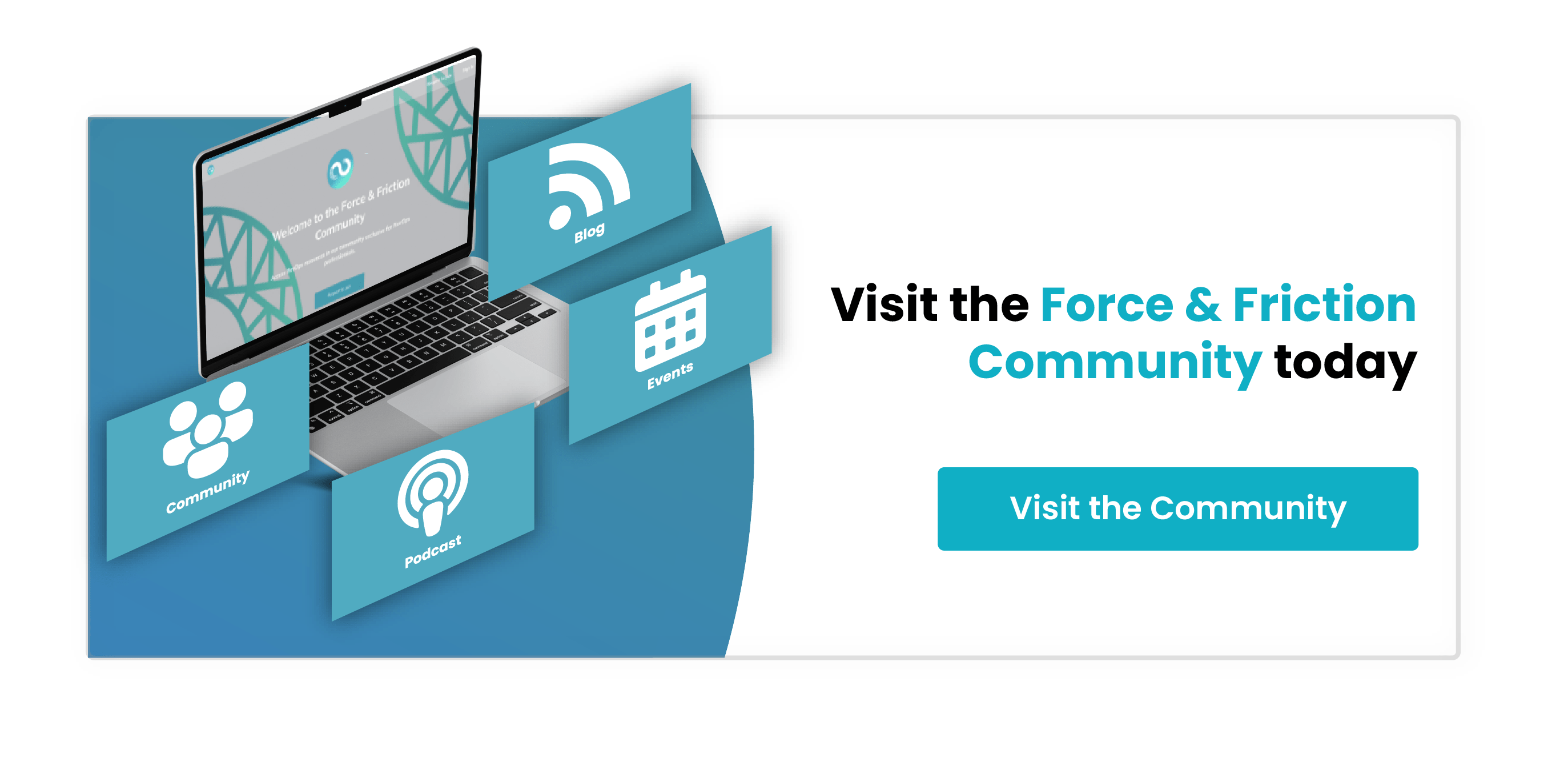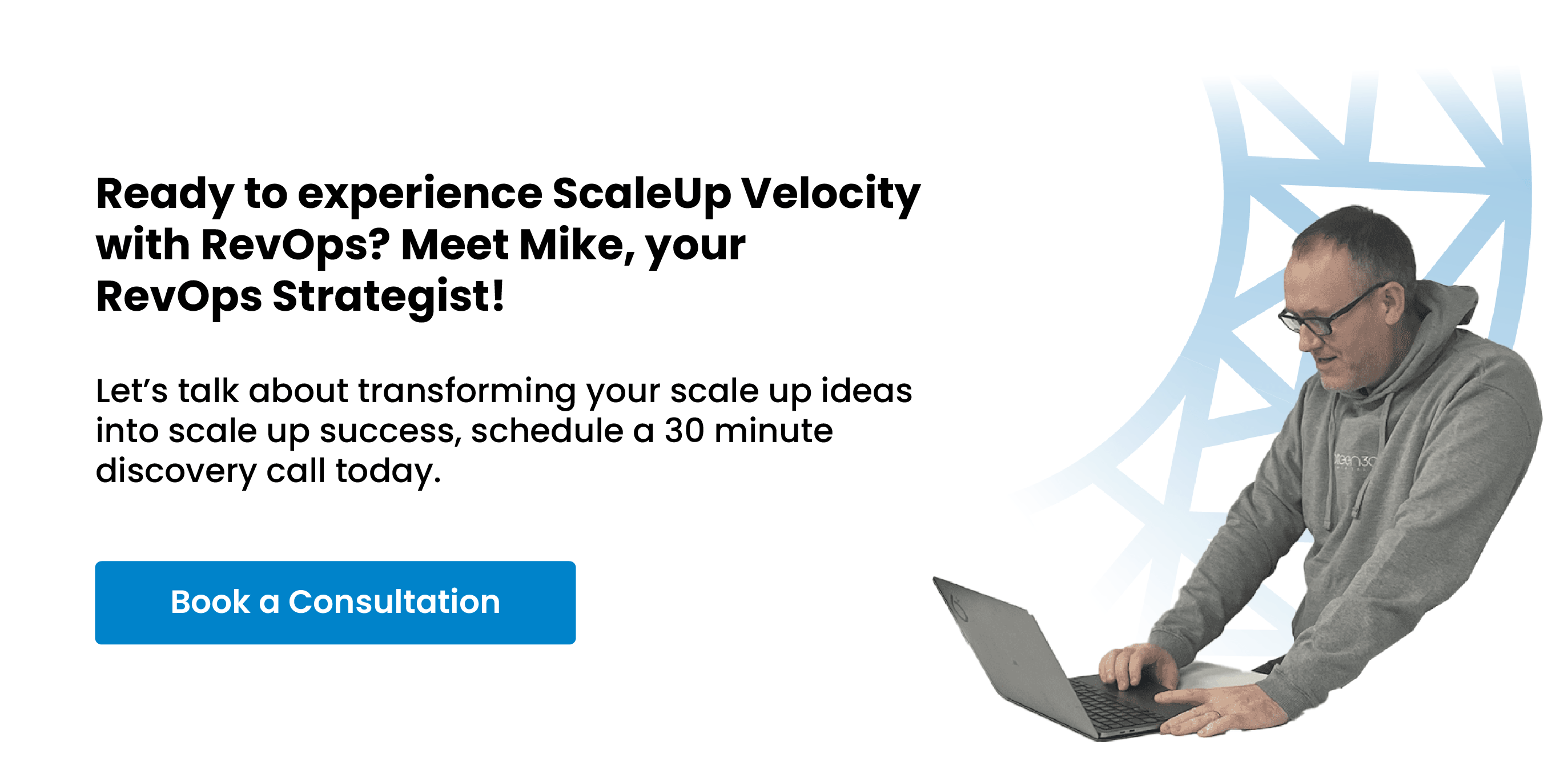
How To Create Your Sales Processes Inside Revenue Operations
Today’s sales teams face a more challenging landscape than ever before. Sales cycles are longer while prospects expect more information, more interactions, and a greater number of digital touch points. What’s more, competition is intense, and margins are tighter.
With more insights from more channels to dig through, it’s vital that sales teams are working efficiently, can identify which activities generate the most value, and provide all prospects with a consistent experience.
McKinsey notes that sales teams that have centralised insights, an omnichannel strategy, streamlined sales processes and tailored learning journeys for upskilling see an average revenue uplift of 20%.

A strategic, sustainable and scalable sales process provides a clear framework for every member of your sales team. It guides them through the sales cycle from initial lead to conversion, with a series of best practise steps which outline exactly what to do at each stage of that cycle.
RevOps is all about the alignment of people, processes and platforms in order to eliminate silos, create consistency and maximise revenue. It’s easy to see the value a documented sales process, which puts all sales reps on the same path, can contribute to this mission.
Creating a sales process within RevOps can be achieved with a five-step approach:
Step 1: Map your sales cycle
The first step in creating a sales process is to define the steps in your sales cycle. A sales cycle typically includes prospecting, qualifying, presenting, closing, and post-sale activities. You should be able to outline each of these stages including the key activities, roles and responsibilities, and success metrics for each.
Step 2: Define Your Sales Metrics
The next step is to define the sales metrics you’ll use to measure the effectiveness of your sales process. Popular KPIs for sales include average deal size and lead-to-customer conversion rate.
Once your KPIs are well defined, you’ll use them to determine how well your sales function is performing and predict future performance. The data associated with these metrics is a bellwether which will indicate if you’re on course to achieve sales targets or if intervention is required.
Step 3: Define Your Sales Technology Stack
The quality of software and technology at your sales team’s disposal will significantly impact effectiveness and efficiency. This is an especially important consideration given the latest research suggests that 74% of sales reps say a lot of the time they spend at work isn’t spent on sales at all.
Tasks like scheduling calls, taking internal calls and meetings and updating CRM systems account for 41% of all sales rep time. That means almost half of your sales time is being lost to repetitive manual tasks.
It’s all the more important to define the sales technology stack that your team will use so you can see where gaps and opportunities exist. The average sales tech stack will include anything from four to 10 different tools. Examples include a CRM system, a lead generation tool, sales enablement such as demo software, communication systems and automation tools.
Step 4: Align Sales with Marketing and Customer Success
Aligning sales, marketing, and customer success is the main objective of RevOps - and it’s crucial to driving sustainable revenue growth. Marketing generates leads and it’s up to sales to then turn those leads into customers by closing the deal.
Customer success comes into play with post-sale support, which helps ensure customer satisfaction and retention. This is what drives revenue growth: converting leads into customers, and first-time customers into repeat business and brand advocates.
Step 5: Train and Enable Your Sales Team
No matter how effective the process you have designed: its outcome will only be as good as the training and support offered to the sales team. For your sales reps to effectively execute the sales process, they must be educated on that process, sales technology, and best practices for selling.
They’ll also need to be equipped with the enablement tools and resources they need to succeed, such as sales playbooks and templates.
The importance of defining your sales process
As we have seen, your ability to achieve your RevOps objectives depends in part on defining your sales process. This is the framework that outlines the key steps and activities in the sales cycle. There are several reasons why this is a fundamental task that you really won’t want to skip.
-
Create consistency
A well-defined sales process ensures that your sales team has a consistent approach to selling, regardless of rep and irrespective of the prospect. This consistency is crucial for delivering a predictable and repeatable sales performance.
Without a defined sales process, sales reps may rely on their intuition or experience, leading to inconsistencies in their approach. This can result in missed opportunities, lost revenue, and ultimately, an inconsistent customer experience.
-
Ensure visibility
A well-defined sales process provides visibility into each stage of the sales cycle. It enables sales teams to track the progress of leads and opportunities through the entire journey.
This insight means that it becomes easier to spot bottlenecks and inefficiencies in the sales process and make data-driven decisions to improve performance. This should also make it easier to see where prospects are getting stuck or falling out of your sales funnel before converting.
-
Bake in efficiency
A well-defined sales process enhances efficiency by streamlining the sales cycle, so efforts are focused on the areas that drive most revenue. No one wants to spend too much time and effort to close a single sale; an efficient system ensures that each step in the sales process is optimised to move leads through the pipeline quickly and effectively. T
his can help reduce the time and resources needed to close deals, resulting in a higher return on investment for your sales efforts.
-
Ensure scalability
A well-defined sales process is scalable, meaning it can be applied consistently across different sales channels, regions, and teams. This scalability is critical for any fast-growing business, as it's likely to take on new sales reps and teams at a fast pace.
A defined sales process ensures that new hires quickly understand the sales approach, allowing them to hit the ground running and ramp up their sales performance in a shorter timeframe than you might otherwise expect.
-
Deliver a high quality customer experience
A well-defined, consistent, and efficient sales process can elevate the customer experience regardless of which sales rep they interact with.
The defined nature of the sales process means that all prospects are assured of receiving the right information at the right time. This not only helps to maximise conversion rates, it also means that no one sales rep can deviate from the expected levels of service you strive to offer.
Defining your sales process with the buyer's journey
Defining your sales process with the buyer journey is another crucial aspect of RevOps that can help businesses understand and optimise their sales approach.
The buyer's journey is the path each prospect takes from the first step of becoming aware of a problem or need, to considering and evaluating solutions to finally making a purchase decision.
By aligning your sales process with the buyer's journey, you can tailor your sales approach to each stage, resulting in a more effective and efficient approach.
The first step in defining a sales process with the buyer's journey is to identify the stages that your customers experience. The typical buyer's journey includes three stages:
-
Awareness: the customer becomes aware of a problem or opportunity they want to address. They’re looking for answers to their problem. This could take the form of research data, educational content or opinions.
-
Consideration: the customer researches potential solutions and evaluates them against their needs.
-
Decision: the customer chooses a solution and makes a purchase decision.
Once you have identified the stages of the buyer's journey, the next step is to define the activities that sales reps should undertake at each of those stages. In the awareness stage, sales efforts will likely have more of an educational slant.
To support the activities in each stage, you'll need to create content that speaks to the prospect’s specific needs at that point. For example, in the awareness stage, the focus will be on educational content such as how-to videos or blog posts.
In the consideration stage, you want to position your product or service as an appropriate solution. That means sharing case studies, assisting with product comparisons or arranging a demo.
When your prospect reaches the decision making stage, the sales rep’s focus in on closing the deal.
To support that, you'll need to create content that addresses customer concerns and provides assurance that they are making the right decision. That may entail offering a free trial or providing a purchase incentive.
Align the Sales Process with the Buyer's Journey
Once you have defined the activities and content for each stage of the buyer's journey, the next step is to align your sales process with the buyer's journey. To do this, you’ll need to map your sales process to the buyer’s activities at each stage of their journey.
You should end up with a clear and concise sales process that outlines the steps and actions needed to both support the prospect and move them further along the funnel to conversion.
Use Data to Refine and Optimise the Sales Process
Finally, it's essential to continuously use data to refine and optimise your sales process: a process, by definition, is never a done deal.
By tracking and analysing data on sales performance, you can identify areas of the sales process that need improvement and make data-driven decisions to optimise your sales performance.
Your sales process steps
As we know, RevOps brings together the three main revenue-generating departments within a business: sales, marketing, and customer success.
It aims to streamline and optimise these functions to improve the overall revenue generated by the organisation and create a foundation to scale.
Obviously, the sales process plays a critical role in improving overall revenue performance and achieving sustainable growth. Not two sales plans are identical, but the sales process steps remain the same.
Step 1: Prospecting
The first step in the sales process is prospecting. This phrase may evoke the mental image of an old-times gold rush, and in reality, that’s not too far off! In the context of sales, prospecting involves identifying potential customers who may be interested in your product or service. This can be achieved through various methods, including cold calling, email outreach, or social media. When you think about it, it is not unlike searching for gold nuggets which may lead to finding a more sizable gold deposit.
Step 2: Qualifying
Once you have identified potential customers, the next step is to determine if they are a good fit for your product or service - in short, if they qualify. This involves understanding their needs, pain points, and budget to determine if your product or service can help them.
Step 3: Needs analysis
With our qualified leads in hand, the next step is to conduct a needs analysis to understand the customer's specific requirements and identify the best way your product or service may address them. This involves asking targeted questions, and actively listening to the customer's responses.
Step 4: The solution
Once you have conducted a needs analysis, it’s time to present the customer with a solution that meets those needs. This involves explaining how your product or service can address their pain points and/or provide value to them.
Step 5: Handling objections
However convincing the solution presentation may be, it’s likely that the customer may express concerns or objections. The salesperson needs to be prepared for these objections and be equipped to handle them effectively - never dismissing them, but rather addressing the customer's concerns and providing additional information or evidence to support the solution presented.
Step 6: The close
The next step in the sales process is closing the deal. This can be done through various methods, including asking for the sale, offering incentives or discounts, or providing a deadline for the customer to make a decision.
Step 7: The follow up
After closing the deal, the salesperson or your customer success team should follow up to ensure they are satisfied with their purchase and address any issues or concerns that may arise. This step is critical to building a long-term relationship and ensuring they become a repeat customer and advocate.
Step 8: Data analysis
Finally, data analysis is an essential step in the sales process. By tracking and analysing data on the sales performance, you can identify areas that need improvement and make data-driven decisions to keep optimising the sales process.
Creating Your Sales Playbook
Creating a sales playbook provides a framework for the sales team to follow when interacting with potential customers. The playbook serves as a guide, outlining the best practices, processes, and strategies to follow to increase the likelihood of closing deals and generating revenue. But how do you go about creating a sales playbook?
The first step to creating a sales playbook is to refer to your sales process. This sets a foundation for ensuring that the sales team is aligned and consistent in their approach to engaging with potential customers.
Buyer personas
Identifying the different buyer personas that the sales team will be targeting - understanding their pain points, motivations, and decision-making processes - is a fundamental step in the creation of your playbook.
The more detailed your understanding of your buyer personas is, the better you can tailor your sales messaging and approach to align with the specific needs and preferences of each prospect.
Understanding who you are targeting and what they are looking for means that you can also develop sales messaging designed to resonate with each type of prospect.
When doing so, your focus should be on crafting compelling value propositions, addressing pain points, and highlighting the unique features and benefits of your product or service - what can you offer that others cannot?
The messaging should be consistent across all sales collateral - including presentation material, email templates, and call scripts.
The customer may not just take your word at face value; to help address any misgivings, you will need to develop sales collateral that supports the sales process in addition to sales messaging.
Case studies, testimonials, whitepapers, and product demos are all powerful tools that can demonstrate the value and effectiveness of your product or service. These materials should be easily accessible to the sales team to enable them to progress the prospect and tailored to each previously identified buyer persona.
The importance of training
To ensure that your sales team is fully equipped to execute the sales playbook, comprehensive sales training programmes are a must. A comprehensive training program will address numerous areas, including core sales skills, product knowledge, and objection handling. Ideally, training should be ongoing and include regular coaching and feedback to ensure a cycle of continuous improvement.
Remember how we talked about the importance of a well-defined sales technology stack - such as customer relationship management (CRM) software, sales automation tools, analytics platforms to track and analyse sales performance? This is where it comes into play! Sales technology can play a critical role in supporting the sales process, streamlining it, and maximising efficiency.
Finally, it is essential to monitor and refine the sales playbook regularly. This includes tracking key performance metrics, identifying areas for improvement, and updating the playbook to reflect changes in the market or customer preferences. By continuously refining the sales playbook, you can ensure that your sales team is always aligned and equipped to meet the evolving needs of your customers.
Evaluating Your Sales Process
Evaluating your sales process enables you to identify areas for improvement and optimise your revenue generation. However, to conduct accurate evaluations, you will need to get a few things in place.
As we saw earlier, you will need to identify the KPIs that will be used to evaluate the sales process. This includes metrics such as conversion rates, average deal size, sales cycle length, and win/loss ratios.
By identifying the KPIs upfront, you can ensure that you are measuring the most critical aspects of the sales process and have a baseline from which to measure performance.
Once the relevant KPIs have been established, it’s time to put them to good use and collect data. You should have multiple data sources to consider here, including from your CRM, sales automation tools, and other sales-related systems. It goes without saying that the data must be accurate and up-to-date.
Collected data can be analysed to identify trends and patterns. This includes looking for areas of the sales process that may be causing bottlenecks or inefficiencies; it is important to analyse the data as soon as it’s been collected.
Things move quickly, and a delay in analysing data may lead to an inaccurate picture.
In addition to analysing data, conducting interviews with the sales team to gain insights into their experiences and perspectives on the sales process can provide invaluable insight that you may not gain by taking the data at face value alone.
-
What challenges do they face?
-
Which sales tactics do they find to be most effective?
-
Where do they feel that improvements can be made?
Based on the data analysis and sales rep interviews, you’re in an ideal position to identify opportunities for improvement.
Gaps in sales training or technology may hinder sales performance, and so could inefficiencies somewhere in the pipeline. The sooner these problems are identified, the sooner they can be addressed.
Once the areas for improvement have been identified, the next step is to develop action plans to address them.
This includes implementing changes to the sales process, such as streamlining or optimising specific stages, as well as providing additional sales training or technology solutions to improve performance as needed.
As ever, you’ll need to monitor, monitor, monitor! Monitoring progress and tracking the impact of the changes implemented is vital to ensure they are having the intended effect.
As buyer habits shift and more data is gathered, new opportunities and challenges may also come to light.
Sales Enablement
Sales enablement equips your sales reps with the necessary resources, tools, and information they need to effectively engage with buyers and close deals.
To do that, your RevOps team or enablement leaders must be able to interpret data, understand changing buyer behaviours and design suitable programs in line with that knowledge.
This is an increasingly challenging area. As per Gartner, sales enablement gives sellers what they need to engage buyers. However, today’s buyers no longer want to be sold to.
43% of modern B2B buyers desire a sales-free experience. So, how can your sales team be helpful to buyers and enable that self-serve preference? It comes down to your sales enablement program.
As part of that program, you’ll need to refine your brand messaging and ensure that you’re creating content that supports buyers who don’t want to be sold to. You’ll want to ensure your sales reps are as skilled as possible, with the tools and resources they need to work productively and engage with modern buyers.
As part of this, you’ll also need to identify and implement technology solutions that empower sales teams to work more efficiently and effectively.
Tools such as customer relationship management (CRM) systems, sales automation platforms, and analytics solutions can help sales reps to be more agile and meet changing buyer expectations.
Providing ongoing training and coaching is another vital component of sales enablement. To achieve this, it’s crucial to develop training programs that impart product knowledge, develop sales techniques, and improve objection handling.
Measurement of course, is critical.







%20-%20Teal.png?width=500&height=130&name=Force%20%26%20Friction%20-%20Branding%20-%20Logo%20(White)%20-%20Teal.png)